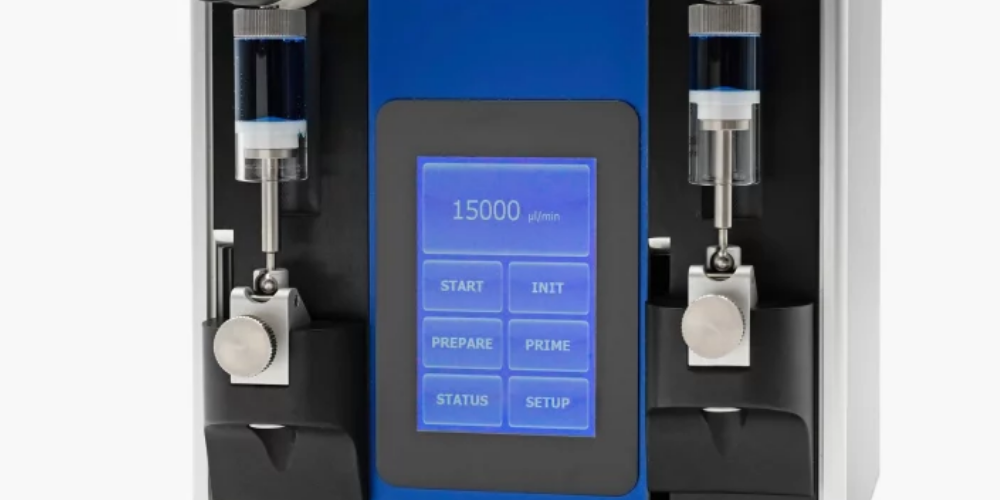
Our Educational Primer Series presents a deep dive into the technical elements that bring together the world of 4D Systems and what we have to offer. You’ll find that this information series, developed with our experts and engineers, is the perfect place to power up your knowledge and take your understanding of our hardware and software to the next level. As always, feel free to reach out and get in touch. The best learning is interactive and we’d love to hear from you.
File Downloads

What are intelligent display microcontrollers?
Have you ever wondered how your TV’s remote device controls the channel selector, speaker volume or colour adjustments of your TV? Or how your car engine maintains the desired fuelling and ignition. Or how the display unit keypad on your kitchen gadgets can execute a command that can turn the gadget on and off. What is that component that first gathers information then processes it and finally outputs a certain action based on the information gathered?
Microcontrollers are ruling our lives. There is hardly any electronic device that comes without at least one microcontroller, and usually there are several – there is one microcontroller for the user interface and another to control the motor and so on. Whether you’re driving your car, scrolling your computer screen, opening your garage door or heating a cup of water in your microwave oven, there is one component that is in common. Microcontrollers are widely used in various applications and different devices.
What are microcontrollers?
TI (Texas Instruments) engineers, Gary Boone and Michael Cochran, created the first microcontroller in 1971. As the name indicates, microcontrollers are single integrated circuits (IC) that are designed to control one task and run one specific program. These single-chip microcomputers are also known as embedded controllers because they are often embedded into the devices they control; like automatically controlled electronic devices such as smartphones, cameras, microwave ovens, washing machines, etc. The microcontroller can be seen as a minicomputer and has the same components a computer possesses – a processor unit (MCU), memory, serial ports and a few peripherals.
Advantages of a microcontroller:
Interfacing microcontrollers with intelligent displays
Many electronic gadgets that are frequently used in our day-to-day life integrate microcontrollers with an appropriate external device to perform many special tasks. This process of connecting devices together so that they can exchange information is known as interfacing.
Here data or information is transferred between the microcontrollers and interfacing peripherals. There are different types of interfacing peripherals like LCD displays, LEDs, ADC, sensors, keypads, microprocessors, motors, external memories and other devices. Interfacing has been able to resolve many complex glitches in circuit designing.
Intelligent displays have been around for a long time and many fields are adopting touchscreens and touch panels for applications with computer interfaces. As intelligent displays offer a more natural interaction that humans are used to, it also offers a great advantage over conventional tracking methods like a keyboard or mouse.
Display options for interfacing microcontrollers
A few of the intelligent display options available for microcontrollers are LCD, LED and OLED. An LCD uses a backlight made of either CCFL or LEDs. An LED display uses LED backlighting, and an OLED emits light to LEDs and does not require a separate backlight.
LCDs have been used to display output messages for many automated devices ranging from microwave ovens to washing machines to cell phones to televisions, to monitors and other similar devices. Liquid crystal, as the name suggests, is an organic substance that is found in both the liquid and crystal molecular form. Liquid crystals are placed between transparent electrodes, which are covered by polarisation filters. In the presence of an electric field, the liquid crystals tend to untwist which blocks the light coming through the filters. This makes the screen or part of it look dark. When the light passes through both filters, the screen looks lighter in colour.
LCDs are reasonably priced, easily programmable and they have no limitations of displaying special characters, graphics and multiple lines of information. It consists of a command register and a data register. While the command register stores the command instructions given to the LCD, the data register stores the data to be displayed on an LCD. A command could be any instruction like initialising, clearing the screen, setting the cursor posing or controlling the display.
Microcontrollers have played an important part in the technological revolution that has shaped our fastpaced lives. With the IoT (Internet of Things) rapidly increasing and with data constantly being gathered, microcontrollers are going to be a huge part of the future modern world.
For a great range of LCD screens, visit: www.4dsystems.com.au/products/
Table of contents
Subscribe to our newsletter
Latest Case Studies

This case study unveils a practical application of embedded innovation, highlighting the process and outcomes of upgrading legacy systems in a technology-focused product line. Through strategic technological integration, the project not only uplifted product performance but also markedly improved customer satisfaction levels. The subsequent pages delve into various strategic and operational enhancements made, providing readers with a nuanced understanding of the concrete impacts and subtleties involved in a real-world, engineer-led embedded innovation initiative. A testament to blending traditional systems with modern innovation.

Duratec, specializing in liquid handling devices for various industries, aimed to simplify the control interfaces of their new product line. Partnering with 4D Systems, they integrated a touch display module enhancing user-centricity and operational efficiency. This transition replaced outdated control panels with an intuitive, modern interface without compromising on control capabilities via the RS232 interface. Three new devices were launched, improving user interactions through user-friendly touch displays, showcasing Duratec's commitment to innovation. This collaboration allowed for more straightforward control, monitoring, and interaction with Duratec's devices, ensuring a better user experience and meeting industry demands.

In the challenging process of creating an advanced 3D printer, BCN3D encountered an unexpected difficulty: finding an appropriate, user-friendly display module. Despite initial struggles, BCN3D discovered the solution in 4D Systems’ gen4 display modules. These modules offered superior resolution, processing power, and flexibility. Key to BCN3D's decision was the modules' easy integration via a serial connection and the Arduino-compatible library into their firmware. For its Sigma R17 3D printer, BCN3D upgraded to the gen4-ULCD-35DCT-CLB, a 3.5-inch Intelligent TFT-LCD display module with capacitive touch, further enhancing the user experience. The gen4 series of intelligent display modules perfectly matched BCN3D's requirements, offering innovative solutions in the sophisticated 3D printing space.

